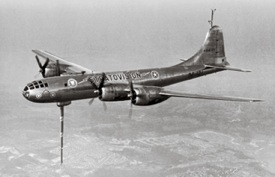Bills to expand Low Power FM radio to America's cities introduced in Congress!
From Prometheus Radio Project:
Hello supporters of low power FM Radio, and Greetings from the Prometheus Radio Project! Read below to get your Congressmembers signed on to expand low power FM radio to America's cities, smaller communities, and your neck of the woods.
You last heard from us in late June, when community radio hopefuls and broadcasters alike announced a breakthrough in the fight to bring low power FM radio licenses to thousands more cities and towns. On June 21, Congressman Mike Doyle (D-PA) joined Congressman Lee Terry (R-NE), as well as Senator John McCain and Senator Maria Cantwell, to introduce the Local Community Radio Act of 2007. This bill -- H.R. 2802 in the House and S. 1675 in the Senate -- is what we have been fighting for for years -- a chance for community radio hopefuls from Omaha to Orlando to get new licenses to build their own low power FM radio stations. (Learn more about how Congress limited low power FM radio in most American cities here -- http://www.prometheusradio.org/take_action/lpfm_in_congress).
Please help us to continue this momentum and get more Congressmembers to support low power FM radio. If we are able to get more Congressmembers to cosponsor this bill over the next week before Congress goes on vacation -- we'll be in great shape for a vote to expand community radio in the fall. No one will do this work for you -- we need you to make this call, or write a letter, for community radio, today.
You can find your Congressmember's information at
http://www.congress.org, or by calling the Capitol Switchboard at 202-224-3121. You can also look them up at http://www.freepress.net/lpfm/.
Want more background? Read House Bill 2802 here: http://thomas.loc.gov/cgi-bin/query/z?c110:H.R.2802: -- and read Senate Bill 1675 here: http://thomas.loc.gov/cgi-bin/query/z?c110:S.1675:.
Or get summaries of low power FM facts at http://www.expandlpfm.org,
http://www.prometheusradio.org, or http://www.freepress.net/lpfm.
Check and see if your Congressmember has cosponsored the low power FM radio bill here -- http://thomas.loc.gov/cgi-bin/bdquery/z?d110:HR02802:@@@P -- some Congressmembers have committed to signing on, like the ones mentioned above, but aren't listed yet!
PPS -- Read a few great stories about the low power FM bills at MyDD.com:
http://www.mydd.com/story/2007/6/21/13024/5742
At the Black Agenda Report:
http://www.blackagendareport.com/index.php?option=com_content&task=view&id=259&Itemid=39
And from the United Methodist Church:
http://www.umc.org/site/apps/nl/content3.asp?c=lwL4KnN1LtH&b=2072531&ct=4027825
PPS -- Here's Mr. Doyle's question on low power FM radio today, at the Congressional Oversight Hearing for the FCC:
In 2004, the FCC issued a report to Congress on the Low Power FM Interference Testing Program after getting public comment on the engineering studies it commissioned. After reviewing all the facts, data and potential for interference, the FCC said in that report quote "Congress should re-address this issue and modify the statute to eliminate the third-adjacent channel distant separation requirements for LPFM stations." Anyone disagree with that?
(silence) Good.
Let the record show that the silence was deafening. My friend, Lee Terry and I have a bill to allow the FCC to expand the benefits low power FM onto more places on the radio dial across the country. LPFM has been critical during emergencies like Hurricane Katrina, to religious groups trying to spread their message and to community groups interested in serving their community. It's my hope that the Commission will continue to support these stations until and after we get this bill
signed into law.
Labels: FCC, Lee Terry, low power FM radio, LPFM, Mike Doyle

